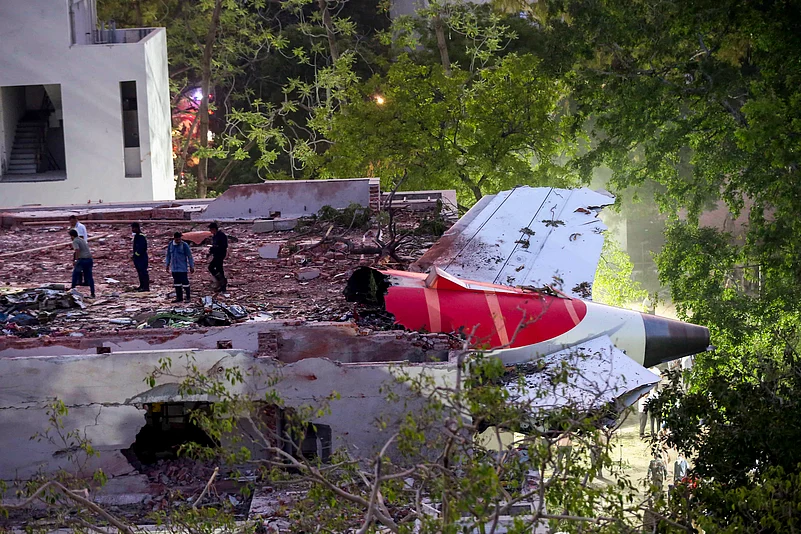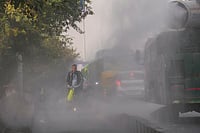Both engines unexpectedly shut down just 32 seconds after an Air India Boeing 787 took off June 12 in Ahmedabad, the Aircraft Accident Investigation Bureau (AAIB) has said in its 15-page preliminary report released on July 12.
According to the AAIB, just seconds before the crash, the plane’s cockpit recorder recorded one pilot asking his co-pilot: “Why did you cutoff?” and the other pilot responding: “I didn’t do it.”
The cockpit voice recorder (CVR) is one of the two components that make up an aircraft's blackbox.
The exchange between the pilots took place was seconds before the crew’s distress call: “MAYDAY, MAYDAY, MAYDAY,” wrote the AAIB.
Seconds later, the Boeing 787-8 Dreamliner crashed into a populus Ahmedabad residential area and on to BJ Medical College’s hostel premises. The crash resulted in the death of 240 of the 241 passengers onboard. Nineteen people who were on the ground at the time of the crash also lost their lives.
Sequence of Events Given In Report
On the afternoon of June 12, 2025, Air India Flight AI171 crashed 32 seconds after take-off from Ahmedabad’s Sardar Vallabhbhai Patel International Airport (SVP airport). The aircraft, a Boeing 787-8 Dreamliner, was a routine international flight to London Gatwick.
The flight took off at 1:39 pm Indian standard time, and crashed into BJ Medical College hostel, about 1.5 kilometres from the SVP airport. Five buildings were severely damaged in the crash and resulting explosions.
The plane, which reached take-off speed and lifted off normally, began having trouble three seconds into the flight, AAIB analysis shows. Then both engines shut down; both fuel control switches flipped to “OFF” position one after the other in a matter of a second. Without its engines, the plane started losing altitude quickly.
AAIB added that the backup emergency power system, known as a Ram Air Turbine (RAT), confirmed a total engine failure. The Pilots are recorded trying to restart the engines but only one responded, and a little too late.
The crash debris spanned an area of 1000 ft by 400 ft area. The engines, landing gears, and wings were thrown across and found on the roofs of multiple buildings in the crash site. AAIB said it found the plane’s tail fin (vertical stabiliser) 200 feet from the crash site. The plane’s cockpit, nearly unrecognisable, was found about 650 feet from the impact point of the crash.
AAIB also found that there were no bird strikes or weather issues at the time of take-off. The flight had gotten a full maintenance clearance, although there had been a few non-critical issues that had been flagged recently before the flight date. The aircraft’s black boxes—one located in the nose and the other in the tail—were severely damaged, but investigators managed to extract critical flight data from one of them.
Why Did Both Engines Fail?
The AAIB has yet to give a reason for why both engines failed on the Dreamliner. The preliminary report speculates that it could be an issue with the fuel control system or in the throttle, Similar concerns had been raised in a 2018 US safety advisory on the Dreamliners. However, that advisory had also said this was not a critical issue, and no mandatory changes were made to the aircrafts at that time.
AAIB has said that at this stage, “there are no recommended actions for B78708 and/or GE GEnx-1B engine operators and manufacturers.” The aviation body will further examine whether technical faults, maintenance lapses, or human error led to the simultaneous and unexplained engine shutdown, the report said.




























